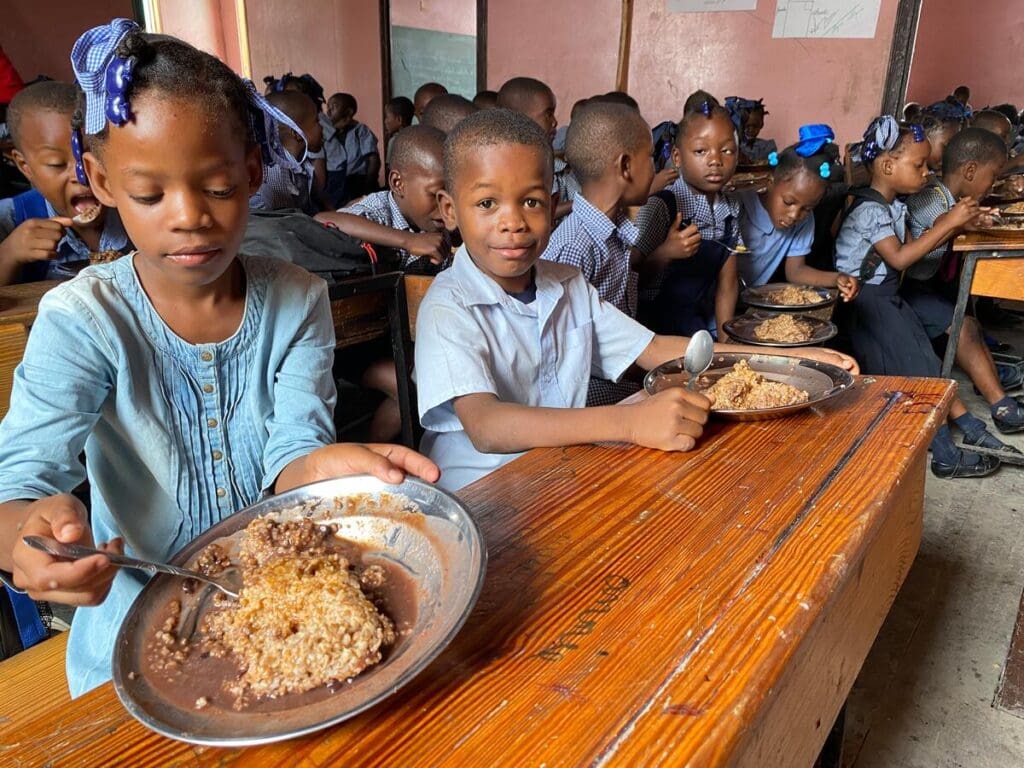Nutrition Crisis Looms as More Than 39 Billion in-School Meals Missed Since Start of Pandemic – UNICEF and WFP

School meals, often the one nutritious daily meal that children get,
must be prioritized in school reopening plans.
NEW YORK/ROME, January 28, 2021 – More than 39 billion in-school meals have been missed globally since the start of the COVID-19 pandemic due to school closures, according to a new report released today by the UNICEF Office of Research – Innocenti and the United Nations World Food Programme (WFP).
COVID-19: Missing More Than a Classroom notes that 370 million children worldwide – many of whom are reliant on school meals as a key source of their daily nutrition – have missed 40 per cent of in-school meals, on average, since COVID-19 restrictions shuttered classrooms.
“Despite clear evidence that schools are not primary drivers of COVID-19 infections, millions of children are facing school closures around the world,” said UNICEF Executive Director Henrietta Fore. “Children who depend on schools for their daily meals are not only losing out on an education but also on a reliable source of nutrition. As we respond to the COVID-19 pandemic and await vaccine distribution, we must prioritize the reopening of schools and take action to make them as safe as possible, including through renewed investments in proven infection prevention measures like clean water and soap in every school around the world.”
Latest estimates show that 24 million schoolchildren are at risk of dropping out of school due to the pandemic – reversing progress made in school enrollment in recent decades. School feeding programs can provide incentives for the most vulnerable children to return to school.
“Missing out on nutritious school meals is jeopardizing the futures of millions of the world’s poorest children. We risk losing a whole generation,” said U.N. World Food Programme Executive Director David Beasley. “We must support governments to safely reopen schools and start feeding these children again. For many, the nutritious meal they get in school is the only food they will receive all day.”
During the pandemic, there has been a 30 per cent overall reduction in the coverage of essential nutrition services including school feeding, micronutrient supplementation, and nutrition promotion programs in low- and middle-income countries, as well as programs for the treatment of severe malnutrition in children. During nationwide lockdowns in some countries, all school feeding programs were cancelled.
Global data on the overall impact of school closures on children’s nutrition is limited. However, country-level studies, previous knowledge of the impact of crises on food security and nutrition, and existing nutrition deficits among school-age children and adolescents are cause for significant concern, the report says.
Pre-pandemic survey data from 68 countries show that, before COVID-19 hit, around 50 per cent of children aged 13 to 17 years-old reported feelings of hunger. Further data from 17 countries showed that, in some countries, up to two thirds of adolescents aged 15–19 were underweight. And more than half of adolescent girls in South Asia were anaemic.
The worst-hit areas during the 2014 Ebola outbreak in West Africa saw rising food insecurity in countries already facing high levels of malnutrition. This same trend has already been seen in many countries during the COVID-19 pandemic including in sub- Saharan Africa and South Asia.
Schools meals are not only vital in ensuring children’s nutrition, growth and development, they also provide a strong incentive for children – especially girls and those from the poorest and most marginalized communities – to return to school once restrictions are lifted. The longer children are out of school, the greater the risk that they will drop out of education altogether. Girls face the added risk of forced transactional sex or early marriage.
The U.N. World Food Programme has been supporting governments to adapt their school meals programs during school closures. The report notes that more than 70 countries have delivered take-home rations, cash transfers or food vouchers, providing a valuable, interim solution for millions of children. In the first 9 months of 2020, more than 13 million schoolchildren received U.N. World Food Programme school-based support as compared to 17.3 million the previous year.
Since the start of the pandemic, UNICEF has supported national governments to maintain the continuity of nutrition services for school-age children and adolescents. In 2020, nearly 25 million school-age children and adolescents benefitted from programs for the prevention of anaemia. Tailored to context, most of these programs combined nutrition education and counseling, supplementation with iron and other essential micronutrients and deworming prophylaxis.
UNICEF and the U.N. World Food Programme are urging governments to prioritize schools for reopening while making sure that the health, food and nutritional needs of children are met through comprehensive, high-quality school feeding programs.
###
Notes to editors
The Office of Research – Innocenti is UNICEF’s dedicated research centre. It undertakes research on current issues to inform the global research and policy agenda for all children. For further information, please visit: www.unicef-irc.org
About The U.N. World Food Programme
The U.N. World Food Programme is the world’s largest humanitarian organization, saving lives in emergencies, building prosperity and supporting a sustainable future for people recovering from conflict, disasters and the impact of climate change.
About UNICEF
UNICEF works in some of the world’s toughest places, to reach the world’s most disadvantaged children. Across more than 190 countries and territories, we work for every child, everywhere, to build a better world for everyone.
For further information, contact:
Georgina Thompson, UNICEF, +1 917 238 1559, gthompson@unicef.org
Martin Penner, WFP, +39 345 614 2074, martin.penner@wfp.org




